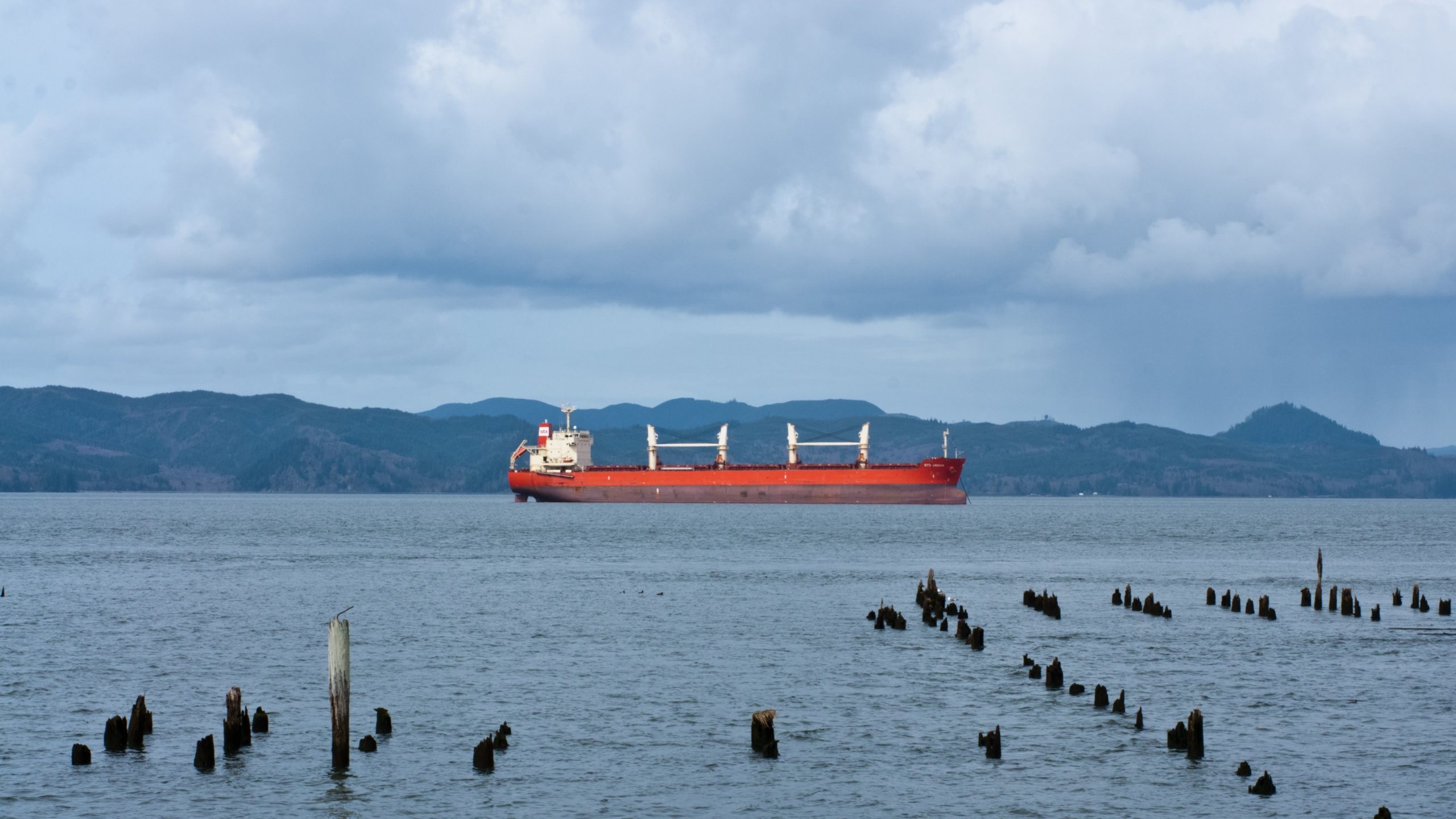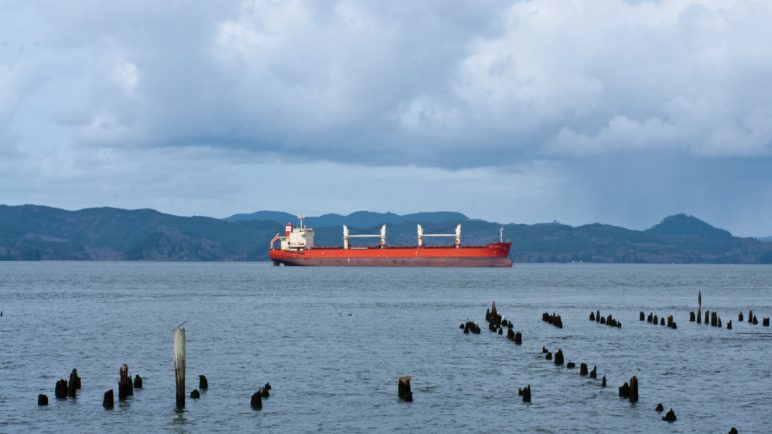Pollution occurs in every phase of the oil refining process. In this series, we analyze the impacts of pollution in three categories: direct pollution from the refinery operations themselves; “upstream” and “downstream” pollution from transporting crude oil and refined products;1 and indirect pollution from consuming the refineries’ products. It’s important to consider all three categories because Northwest refineries do not exist in isolation. Rather, they sit at the center of a sprawling web of petroleum infrastructure.
The coming decades will bring increasingly volatile oil markets as well as promising boosts in energy efficiency, vehicle electrification, and a shift to cheaper clean energy. As demand for oil drops, Puget Sound refinery communities can plan ahead for a smooth transition—protecting workers, local economies, and the environment to build a thriving and resilient future. This article is part of a special series on the issue.
Northwest refineries receive crude oil—the raw material they use to manufacture consumer fuels—via three modes of transportation: pipeline, trains, and marine vessels. After the refining process, the refined products are transported to consumers by pipelines, trains, marine vessels, and trucks. In this chapter, we discuss the upstream and downstream impacts of maritime shipping of crude and refined products.
The track record for—and the potential risk of—maritime shipping of oil is even worse than the often-dismal records of pipelines and trains.
To understand the risk, it helps to start with the numbers. A single oil tanker may carry 400,000 barrels (16.8 million gallons!) of crude or more, while tank barges may have 150,000 barrels in tow. These vessels make nearly 4,000 trips each year on the Salish Sea. And although the vast majority of these transits happen without incident, the historical record shows that Washington has seen multiple spills of thousands of barrels of fuel. The region has been fortunate to avoid a truly major spill for the last two decades.
Disasters and Close Calls
Sightline has documented 50 years of oil spills in Washington’s waters. It’s an alarming history of mishaps, most of which could have been far worse. And the risk goes beyond Puget Sound. Because the oil industry’s reach extends to all of the region’s population centers, there is meaningful risk extended to Grays Harbors and the Columbia River as far inland as Lewiston, Idaho, where the port is visited by petroleum tank barges.
Here we highlight three examples of oil spills that happened as a direct result of moving oil to and from Northwest oil industry facilities:
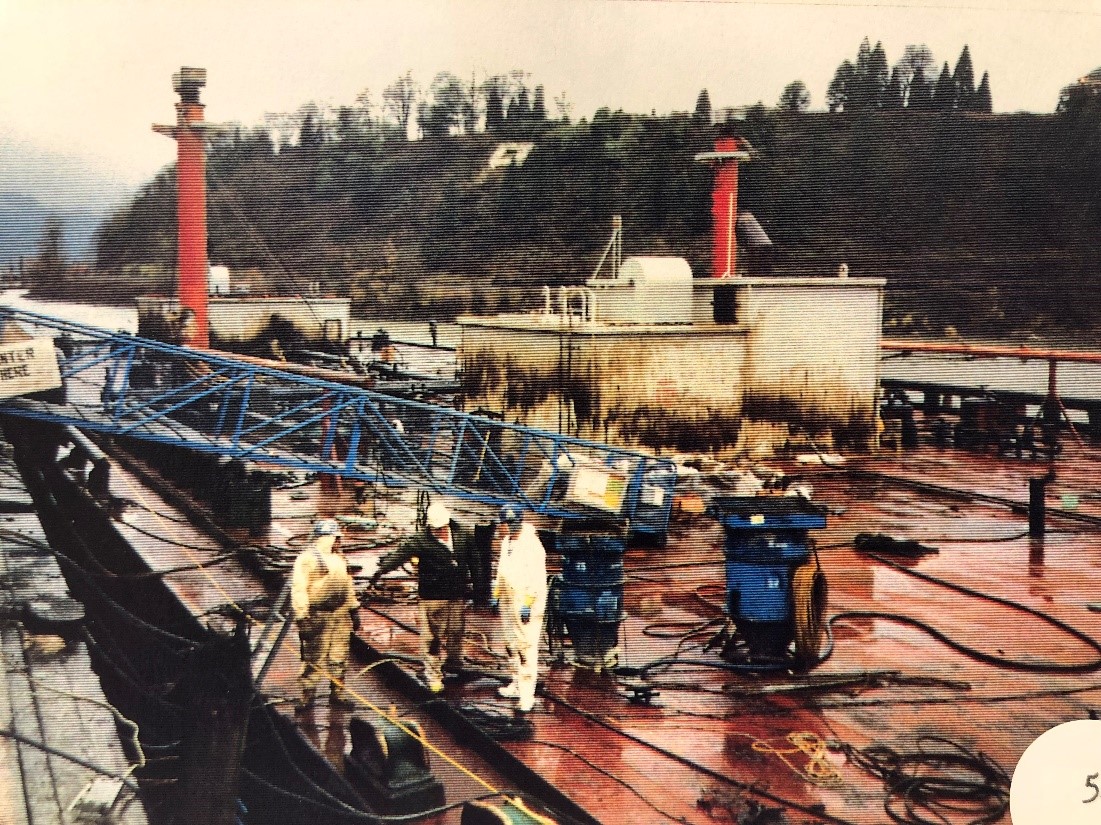
December 1988, the Nestucca oil spill at Grays Harbor. En route from BP’s Cherry Point refinery to Portland, with a delivery stop at Aberdeen along the way, a tugboat towing the oil tanker barge Nestucca attempted to cross the bar into Grays Harbor when the two vessels collided, opening up a gash in the tanker that ultimately spilled some 231,000 gallons of heavy fuel oil. The winter current, winds, and storms dispersed the oil over 800 square miles. It washed ashore as far north as the Scott Islands north of Vancouver Island and as far south as Newport, Oregon. It fouled the lands of the Nuu-Chah-Nulth nations of Canada and the Quinault Nation of Washington. Canadian officials closed fisheries and commercial harvesting locations for up to six months. The oil affected highly sensitive ecological areas, including Olympic National Park, five national wildlife refuges in Washington, and Pacific Rim National Park in British Columbia. Many rocky or difficult-to-reach shores were “left to cleanse themselves,” according to the Washington State Department of Ecology.
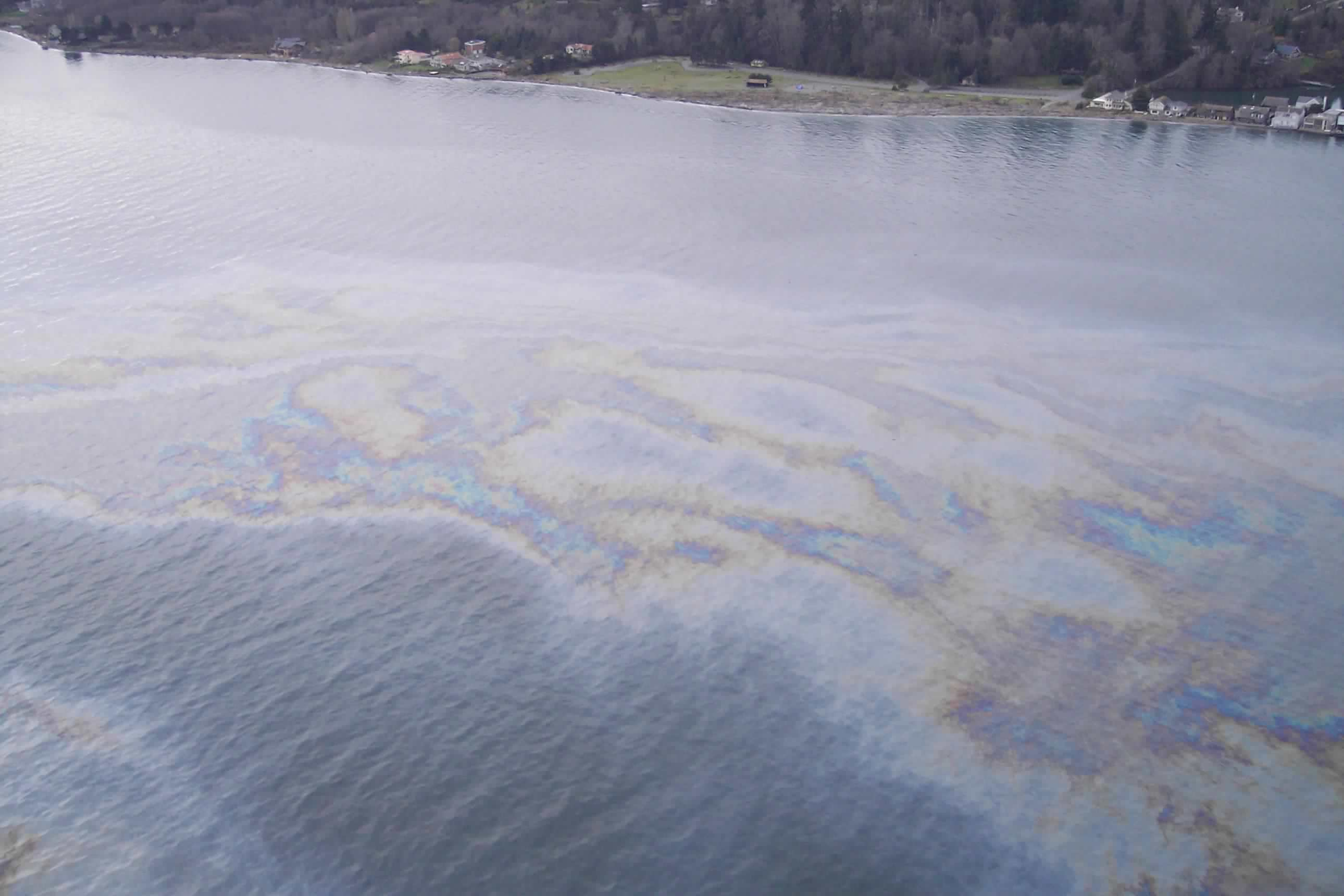
December 2003, near Edmonds. Crews loading a tank barge with heavy fuel oil at the Point Wells ChevronTexaco spilled approximately 4,600 gallons into Puget Sound. Most of the spilled oil washed ashore between Point Jefferson and Indianola on the Kitsap Peninsula, where it fouled the critical forage fish habitat in Doe-Kag-Wats saltwater marsh on the northern shore of Port Madison. The oil killed many seabirds and at least one harbor seal pup and disrupted shellfish harvesting for months.
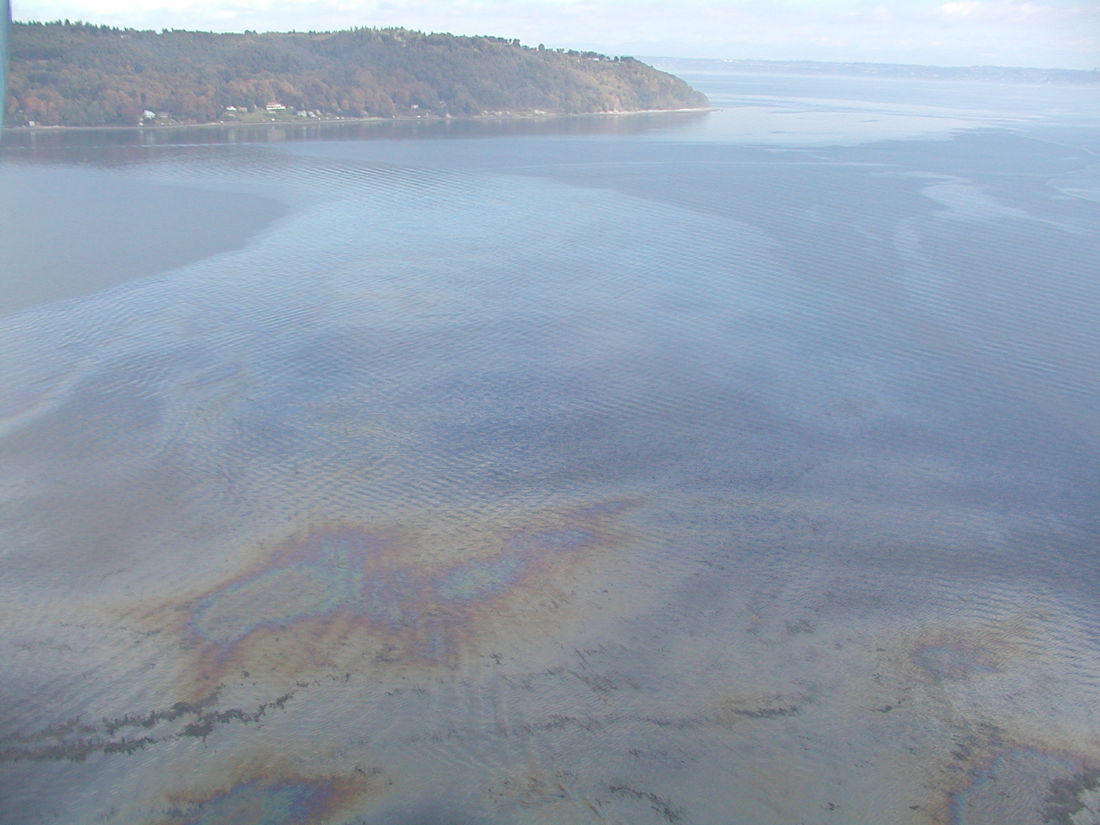
October 2004, the Dalco Passage between Vashon Island and Point Defiance. A tug boat operator sailing through the Dalco Passage in the middle of the night called the National Response Center to report coming across an oil spill, which drifted as far south as the Tacoma Narrows and as far north as Eagle Harbor on Bainbridge Island. Officials closed parks on Vashon and Maury Islands and suspended shellfish and seaweed harvesting as cleanup crews worked to recover an estimated 59 tons of oily debris from the shorelines and 6,842 gallons of oily water with skimming operations. The Coast Guard eventually tracked the spilled oil back to the Polar Texas, a tanker vessel owned by oil giant ConocoPhilips, which was traveling from Alaska to Washington carrying crude oil from Alaska. Some was unloaded at a refinery in Ferndale and more was dropped off at the refinery in Tacoma.
The near misses are almost as harrowing. Thankfully, the Legislature established an emergency rescue tug boat program stationed at Neah Bay in 1999, which has helped prevent catastrophic spills. Consider just three of many examples of near misses below.
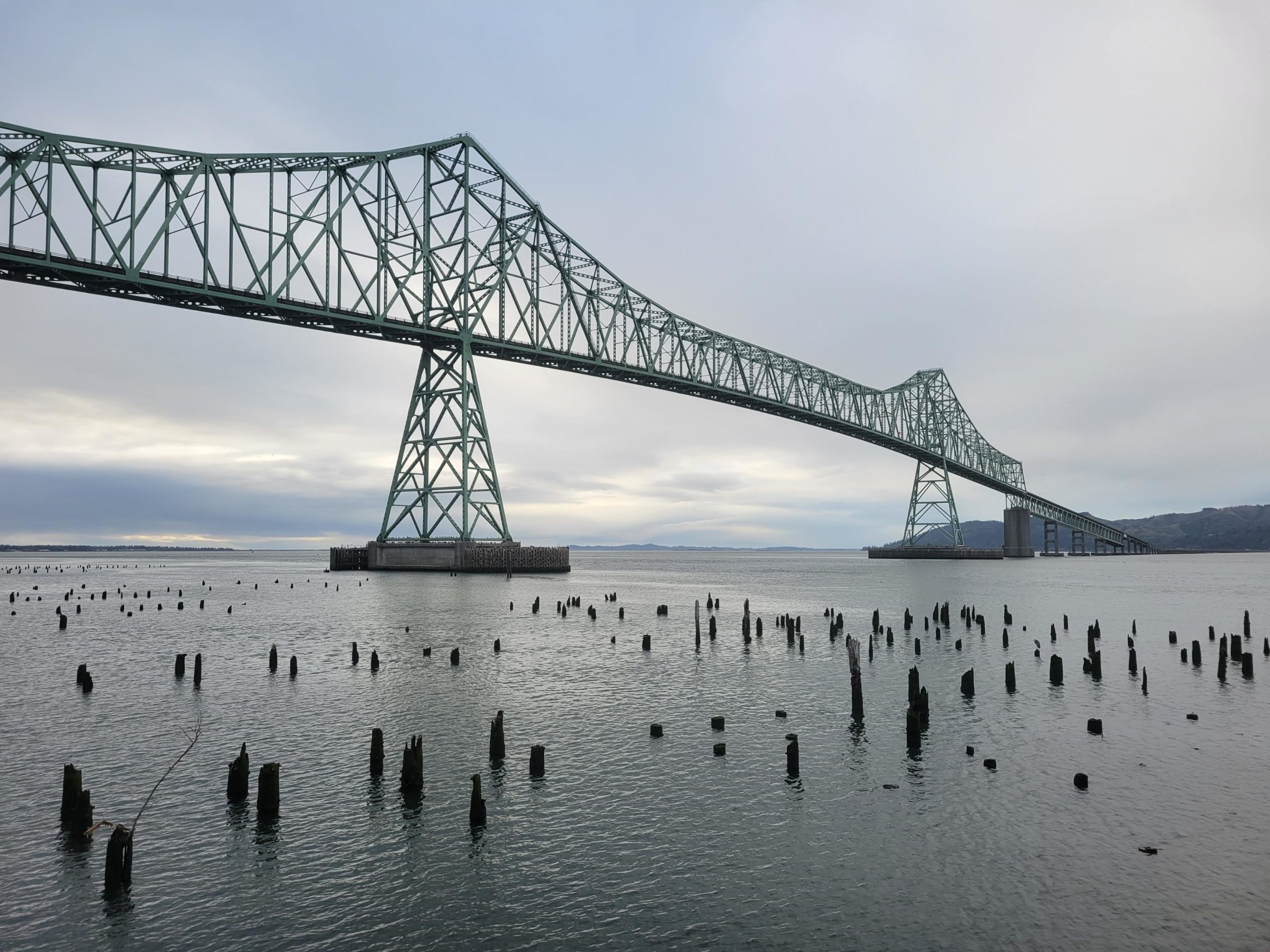
October 1994, Astoria, OR. High winds broke a crude oil tanker free of its mooring lines at a pier. Pushed by hammering winds, the ship drifted sideways across the Columbia River and struck the Astoria-Megler Highway Bridge before grounding in the mud on the Washington bank. One of the cargo tanks ruptured during the incident, but because the ship was unloaded at the time the Columbia was spared a potentially major spill. (The ship was stocked with at least 588,000 gallons of fuel oil in the tanks, though.)
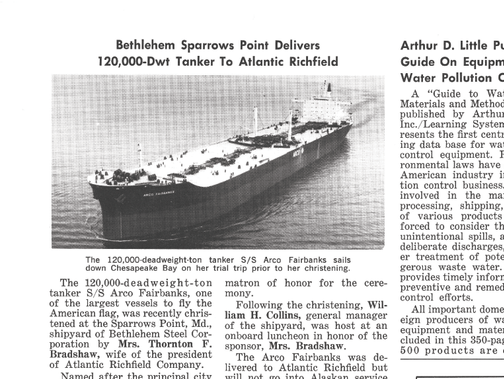
October 1996, Strait of Juan de Fuca. The oil tanker Arcadia, sailing inbound through the Strait of Juan de Fuca carrying almost 7.9 million gallons of fuel oil, lost control of its steering. Unable to adjust its course, Arcadia crossed into the intended path of an outbound oil tanker, Arco Fairbanks. Crews managed to restore steering in time for the pilot of the Arcadia to make a full 360-degree turn while the Arco Fairbanks kept a safe distance. If they had been fully laden, the two tankers would have held a combined 1.3 million barrels of oil, a potential disaster in the making.
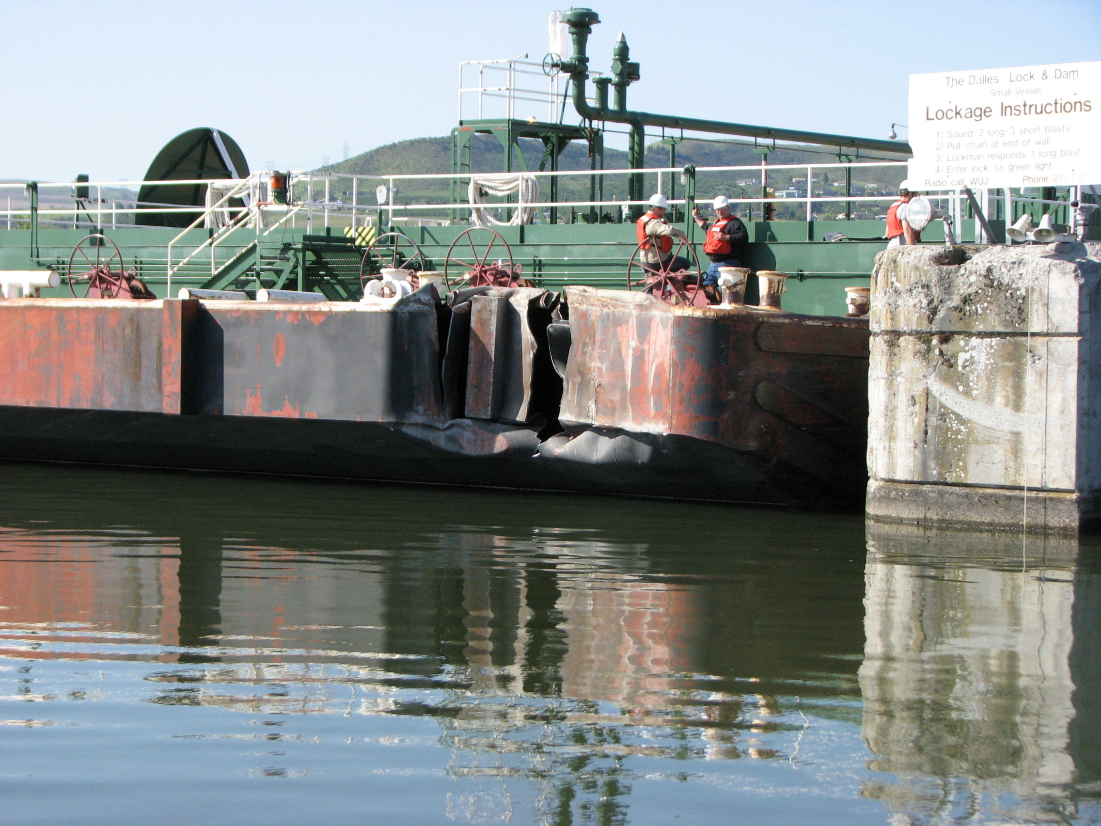
May 2009, The Dalles. A tank barge carrying two million gallons of gasoline collided with the Dalles Lock and Dam, ripping a sixteen square-foot hole in the outer hull of the barge and temporarily shutting down river traffic through the locks. The cargo tanks of the barge did not rupture, and the crew was able to offload its cargo at Pasco.
Ecologic and Economic Costs of Spills
Oil spills are never easy to clean up, but some of the oil transported to Washington’s refineries is especially dangerous, such as the tar sands (sometimes known as “dilbit,” or diluted bitumen) that comes from Alberta. Research shows that dilbit is particularly hard to recover in the event of a spill, an appalling prospect given how little oil is recovered even from spills of conventional crude. In fact, according to Transport Canada, only 10 to 15 percent of a marine oil spill is likely to ever be recovered from open water.
According to an authoritative 2015 report from the US National Academies of Sciences and Engineering, a significant fraction of a tar sands spill would likely sink to the sea floor and remain unrecoverable for decades, if not centuries, harming Dungeness crab, rockfish, sand lance, and other bottom-dwellers. It would also seriously threaten migrating salmon and the endangered Southern resident orcas. Orcas have skin that is surprisingly resistant to oiled waters, but scientists have found that consuming prey that has absorbed oil from a spill or breathing in toxic oily vapors near the water’s surface while breaching can, depending on the level of petroleum exposure, cause lung congestion, pneumonia, liver disorders, and neurological damage. A major Salish Sea oil spill could be devastating to orcas and could trigger an ecological catastrophe.
In fact, something similar occurred in 2012 near Marshall, Michigan, when an Enbridge pipeline ruptured, releasing nearly a million gallons of dilbit into a tributary of the Kalamazoo River. Ultimately, dilbit contaminated 25 miles of the Kalamazoo River’s riverbed. A large portion sank, evading recovery efforts designed for floating oils. That’s because, when dilbit enters water, it separates into its primary components. The original tar-like bitumen sinks, and volatile components such as benzene rapidly evaporate. Airborne benzene, a carcinogen, makes dilbit spill recovery extremely difficult for early responders, who would require artificial breathing apparatuses to work near the spill.
In addition to posing a clear danger to the Northwest’s ecology, oil spills can be incredibly costly. Though it is surprisingly difficult to estimate what the costs could be, it is reasonable to assume that the bill could range into the hundreds of millions or billions of dollars.
A 2019 study by Earth Economics modeled a spill in the San Juan Islands, concluding that a spill of 4 million gallons (or about 95,000 barrels) of diluted bitumen could cost $142 million to $510 million, while a spill of 1 million gallons (or about 24,000 barrels) of heavy fuel oil could cost $84 million to $243 million. And a November 2019 study commissioned by California’s Office of Spill Response and Prevention used historical data from oil disasters to estimate a per-barrel cost for a marine spill. It found that a spill of heavy persistent oil—the type of crude that is often transported in the Salish Sea—could cost more than $700 million for a 10,000-barrel spill.
One estimate sometimes used by the Washington Department of Ecology pegs of the cost of a Salish Sea spill at $10.8 billion. (As far as we can tell, no one knows exactly where that figure comes from.) The Ecology estimate is probably 16 years old at least, which is a problem because the new California report suggests that per barrel costs have increased by a factor of four and it is accepted that response costs have been rising since the 1970s, well outpacing inflation. Whether that means a Salish Sea spill might now cost a mind-bending $40 billion-plus is unclear, but it does suggest the need for updated estimates.
Yet, troublingly, even these daunting estimates may be too cautious. The Earth Economics study does not account for impacts beyond the San Juan Islands, nor do they tally the costs to marine transportation, science and education, endangered species, human health, or tribal treaty rights. Just so, the California modeling exercise did not account for wider economic costs beyond the clean-up efforts and liabilities, such as losses to recreation or ecological value, or to tourism, or for the many marine-dependent jobs that are impacted indirectly.
Whether by pipeline, train, or vessel, transporting crude oil and refined petroleum products presents an ever-present risk. Despite ever more stringent regulations, spills continue to happen, causing harm to our environment and our health. It is simply impossible to eliminate the potential risk as long as oil is being transported. The best way to reduce the number and severity of oil spills is to reduce the amount of oil being transported, and ultimately to retire our oil refineries and transition away from our carbon economy.
This article benefited from past research by Ahren Stroming, Tarika Powell, Michael Riordan, and Paelina DeStephano.

